A Simple Guide to the Brikka Moka Pot
The Bialetti Brikka is a special type of Moka pot. It was designed to brew coffee that is more like espresso. This guide will show you how it works and how to use it right.
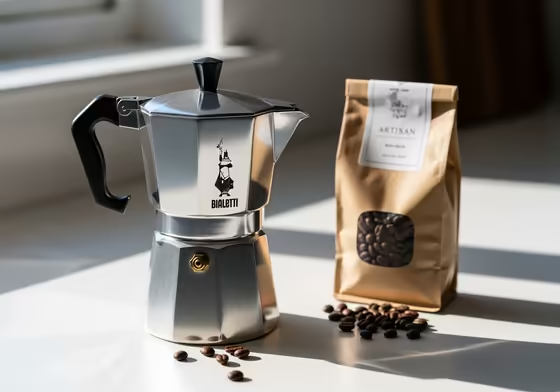
What is a Brikka Moka Pot?
The Bialetti Brikka looks a lot like a classic Moka pot. But it has a special patented valve that lets it brew coffee at a higher pressure. This one part changes everything and makes the coffee more concentrated .
A normal Moka pot brews at about 1.5 bars of pressure. The Brikka's valve holds back the water until the pressure builds up much higher. This creates a stronger coffee with a thick layer of foam on top.
This increased pressure is designed to do two things a normal Moka pot can't:
- Make a stronger, more concentrated coffee that is richer and more intense.
- Create a thick layer of foam, often called "crema," which is the Brikka's main feature .
The Brikka makes coffee that’s somewhere between a regular Moka pot and a real espresso machine. It's not quite espresso, but it's very close. It is in a category of its own.
How Does the Brikka Work?
To understand the Brikka, you need to know about its two different designs over the years. In a normal Moka pot, pressure steadily pushes water up through the coffee. The Brikka is different.
The Brikka’s valve blocks the water at first. This lets the pressure build up way past the normal limit. When the pressure is high enough, the valve pops open and the coffee rushes out all at once.
This system has changed over time. The "Brikka" name covers two very different versions of the pot.
The Old Brikka (Before 2020)
The original Brikka had a heavy metal weight, like a little hat, on top of the column. The steam pressure had to become strong enough to physically lift this weight . This simple, all-metal design was strong and worked very well.

The New Brikka (After 2020)
Newer Brikka models use a different system. They replaced the metal weight with a small silicone part inside the column. This silicone piece has a tiny slit that flexes open when the pressure gets high enough to release the coffee.
Many people have problems with this new design. The silicone can be inconsistent, and the small slit gets clogged easily with coffee grounds or hard water buildup. This is why many new models don't work as well or fail to make good foam .
What It's Made Of
- Standard Models: The regular Brikka is made of aluminum. It heats up fast, but you can't use it on an induction stove. You also should not wash it with soap or put it in a dishwasher.
- Induction Models: There is a special Brikka for induction stoves. Its bottom is made of stainless steel so it will work on induction. The rest of the pot is still aluminum.
What's the Deal with Brikka's "Crema"?
The Brikka is famous for its "crema," but it's not the same as the crema on real espresso.
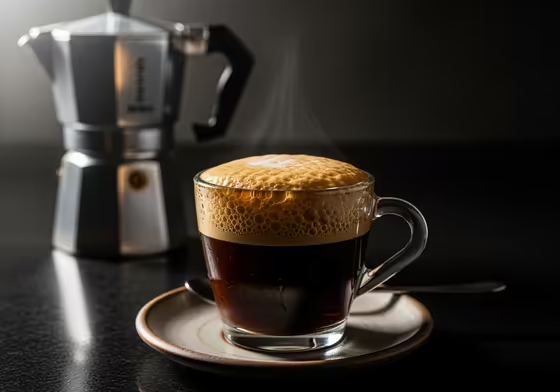
- Real Espresso Crema: This is made by the very high pressure of an espresso machine (9 bars or more). It traps CO2 gas in the coffee oils, making a dense, long-lasting foam.
- Brikka's Foam: The Brikka's "crema" is really just foam . It’s made when the hot coffee is forced through a small opening, which mixes it with air. The open hole in the lid also helps create this foam as the coffee erupts.
Because it's just foam and not real crema, it isn't very stable . Many people with the new silicone valve models complain that the foam disappears quickly after pouring. This is a common issue.
Brikka vs. a Regular Moka Pot
The Brikka makes stronger coffee than a standard Moka Express. But it is not as simple to use.
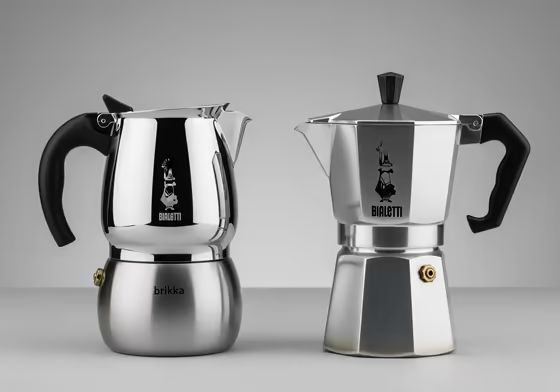
Is Brikka Coffee Stronger?
Yes, the Brikka makes stronger and more concentrated coffee than a regular Moka pot. This is because of two things.
- Higher Pressure: The Brikka's higher pressure pulls more flavor and oils out of the coffee grounds.
- Coffee-to-Water Ratio: The Brikka is designed to use more coffee for the amount of water. For example, the 4-cup Brikka uses the same amount of coffee as a 6-cup Moka Express, but with much less water. This makes the final drink stronger.
The difference is real. The Brikka's coffee is measurably more concentrated than a regular Moka pot's. This puts it in its own category between the two brewers.
How Does it Taste?
The coffee from a Brikka tastes different too. People often say it's richer and rounder, more like espresso. A regular Moka pot can taste more earthy, and sometimes a bit watery or bitter in comparison.
Is it Easy to Use?
The Brikka is not as easy to use as a regular Moka pot. It can be tricky and requires you to be exact with your water and coffee grind. The classic Moka Express is much more forgiving if you make a mistake.
Table 1: Brikka vs. Moka Express: At a Glance
| Feature | Bialetti Brikka | Bialetti Moka Express |
|---|---|---|
| Brewing Pressure | Higher (around 2-2.5 bars) | Standard (around 1.5 bars) |
| "Crema" | Yes, thick foam layer | No |
| Concentration | Higher | Standard |
| Coffee-to-Water Ratio | Higher (More Concentrated) | Standard |
| Taste Profile | Rich, round, intense, espresso-like | Earthy, classic Moka taste |
| Valve System | Patented Pressure Valve | Standard Safety Valve Only |
| Brewing Process | Rapid, sudden eruption | Steady, gentle stream |
| Ease of Use | Low (tricky, needs precision) | High (easy, forgiving) |
Which Brikka Should You Buy?
Brikka Sizes
When you see "cup" size for a Moka pot, it doesn't mean a regular coffee mug. It refers to a small, 2-ounce espresso shot.
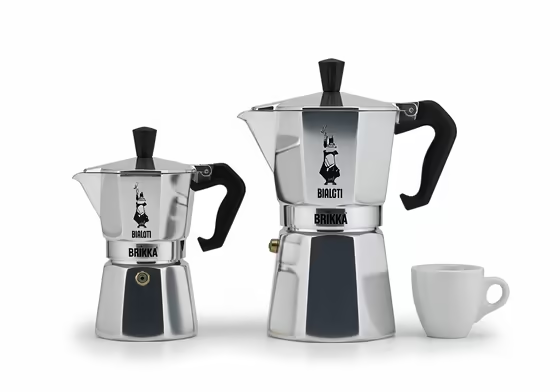
- Bialetti Brikka 2-cup: This is the smallest one. It uses about 80-90 ml of water and makes about 60 ml of coffee.
- Bialetti Brikka 4-cup: This is the most common size. It uses about 170-180 ml of water and makes around 140 ml of coffee.
- The 6-cup Brikka Myth: Bialetti does not make a 6-cup Brikka. People get confused because the 4-cup Brikka's coffee basket is the same size as a 6-cup Moka Express basket.
Using a Brikka on an Induction Stove
A normal aluminum Brikka won't work on an induction stove. You have two choices if you have an induction cooktop.
- The Adapter Plate ( Not a good idea ): You can buy a metal disc that heats up on the stove, and then you place the pot on it. This doesn't work very well, wastes energy, and can sometimes damage your stove.
- The "Brikka Induction" Model ( The right choice ): The best option is to buy the "Bialetti Brikka Induction" model. It’s made with a stainless steel bottom that works directly on induction stoves.
A Warning About New Models
It's important to know there are two main types of Brikkas. The newer models made after 2020 use the silicone valve system. The older models made before 2020 used the heavy metal weight.
Most coffee fans agree that the older models with the metal weight are better. They are more durable and work more consistently.
Buying a new Brikka today can be a bit of a gamble . Many people complain about the quality of the new models.
- Manufacturing: Many new pots are made in Romania or Turkey, not Italy.
- Inconsistency: Some people get new pots that seem used or have low-quality parts. Others say the valve is broken right out of the box.
- Performance: The biggest issue is that they don't always work well. The foam on new models is often weak and disappears very quickly.
How to Use a Brikka Moka Pot
The Brikka needs you to follow the steps exactly. The biggest debate for Moka pots is using hot or cold water. For the Brikka, you must use cold water.
The Brikka's pressure system needs the full heating time to work correctly. Starting with cold water helps build the right amount of pressure to open the valve. If you use hot water, the brew might start too early and the system won't work.
Step-by-Step Brewing Guide
Following this process is the key to making good coffee with the Brikka.
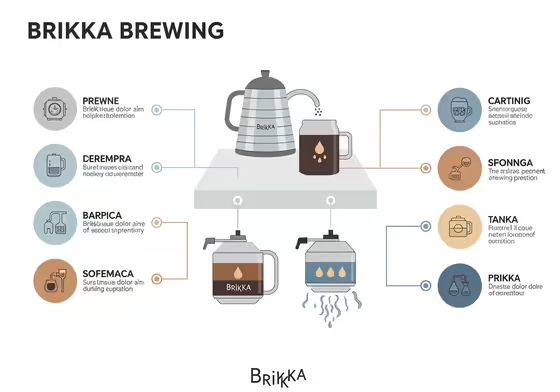
- Measure Water: This is the most important step. Use the special measuring cup that comes with the Brikka. Fill it to the line with cold water and pour it into the bottom chamber.
- Add Coffee: Put the funnel in. Fill it with coffee ground for a Moka pot, but do not press it down. Just level it off with your finger.
- Assemble: Wipe any loose grounds off the rim. Screw the top and bottom together tightly.
- Heat: Place the Brikka on low to medium heat. Make sure the flame is not wider than the bottom of the pot.
- Wait for the Brew: It can take 5 to 10 minutes. You will hear a sudden "puff" sound as the coffee erupts into the top chamber.
- Remove from Heat: As soon as the coffee is done, take it off the heat immediately . If you let it keep sputtering, your coffee will taste burnt and bitter.
- Serve: Pour the coffee right away. Make sure to divide the foam evenly between the cups.
Tips for the Best Coffee
The Best Coffee Grind
The coffee grind is the second most important thing to get right. The Brikka needs a "Moka grind."

- Too Fine (like for espresso): This is a common mistake . If the grind is too fine, it will block the water and make the coffee taste bitter. It can even cause the safety valve to release steam.
- Too Coarse (like for drip coffee): The water will flow through too quickly. This will make your coffee weak and watery.
- Just Right (Moka Grind): The perfect grind is a little coarser than espresso but finer than for a drip coffee maker.
The Best Kind of Coffee Beans
- Roast Level: Medium to dark roasts work best. Light roasts can taste sour in a Brikka because of the high heat.
- Bean Profile: Look for beans with nutty, chocolate, or caramel flavors. Coffee from places like Brazil or Sumatra is a good choice.
- Bean Type: You can use 100% Arabica beans. Blends that include some Robusta beans can make the coffee stronger and create a thicker foam.
- Recommended Brands: If you don't have a grinder, you can buy pre-ground coffee. Good brands include Bialetti's own "Perfetto Moka," Lavazza, Illy, and Café Bustelo.
How to Clean Your Brikka
Proper cleaning is very important for how the Brikka works and how the coffee tastes.
Everyday Cleaning
For aluminum Moka pots, never use soap, detergents, or a dishwasher. These will strip away the coffee oils that season the pot and can ruin the taste.
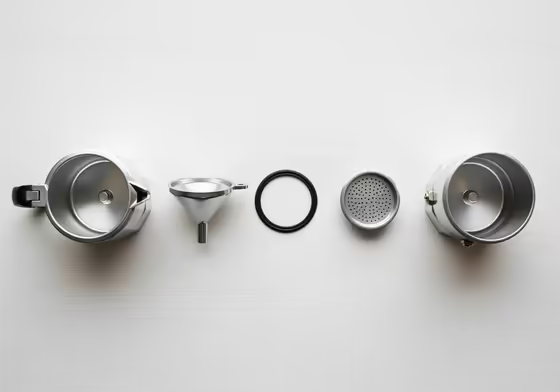
- Let the pot cool down completely.
- Take it apart.
- Rinse every part with only hot water.
- Dry all the parts well with a cloth before putting it away. Storing it wet can cause damage.
Deep Cleaning
Over time, coffee oils and hard water buildup can clog the pot and make your coffee taste bad.
- To deep clean, fill the bottom with a mix of half water and half white vinegar.
- Put the pot together without any coffee in the funnel.
- Run a brew cycle on the stove. This will clean the inside of the pot.
- Throw out the vinegar water and rinse everything well.
- Run one or two more cycles with just plain water to get rid of any vinegar taste.
How to Clean a Clogged Valve
If your Brikka stops making foam, the valve is probably clogged. This is the most common problem.
- Cleaning the Old Weighted Valve: On the older models, you can unscrew the metal "hat" on top. This lets you take it apart and clean all the small pieces inside.
- Cleaning the New Silicone Valve: You are not supposed to take the new valve apart. But if it gets clogged, you might have to. You can gently unscrew the whole valve system from the column with a small wrench to clean it out.
What People Are Saying
People either love or hate the Brikka. Your experience depends on if you master its quirks or get frustrated by its problems.
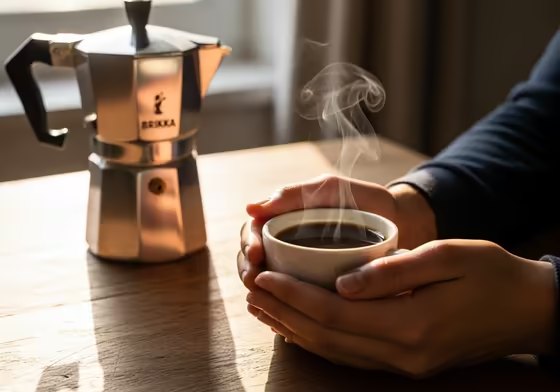
The Good
When the Brikka works correctly, it makes great coffee. People who learn how to use it love the rich, espresso-like results. It gives you something close to espresso without the high cost of a machine.
The Bad and the "Brikka Lottery"
The Brikka is harder to learn than a regular Moka pot. The biggest complaint about the new models (after 2020) is that their quality is not consistent.
This has led to what people call the " Brikka Lottery ." Your experience depends on if you get a good one or a bad one. Some people get pots that are defective or perform poorly, even when they follow all the steps.
Common Problems and Questions
Table 2: Brikka Troubleshooting Guide
| Problem | Likely Cause(s) | How to Fix |
|---|---|---|
| Water/steam leaks from the middle. | 1. Gasket is worn or dirty. 2. Pot is not screwed on tightly. 3. Grind is too fine. | 1. Clean or replace the gasket. 2. Clean threads and tighten firmly. 3. Use a coarser (Moka) grind. |
| Safety valve releases steam. | 1. Coffee is too fine. 2. Coffee was pressed down (tamped). 3. Safety valve is clogged or broken. | 1. Use a coarser (Moka) grind. 2. Never tamp the coffee. 3. Deep clean the pot; if it continues, replace the valve. |
| No foam, or it's very weak. | 1. Wrong amount of water. 2. Grind is too coarse. 3. The valve in the column is clogged. | 1. Use the special measuring cup. This is the #1 cause of failure. 2. Use a finer (Moka) grind. 3. Clean the valve. |
| Coffee tastes bitter or burnt. | 1. Left on heat too long. 2. Heat is too high. 3. Grind is too fine. | 1. Remove from heat immediately when the foam forms. 2. Use low-to-medium heat. 3. Use a slightly coarser grind. |
| Coffee only comes out of one side. | 1. Minor clog in the valve. 2. A flaw in the new valve design. | 1. This is common and usually doesn't affect the taste. 2. Try deep cleaning the valve. |
What are the downsides of a Moka pot?
The Brikka has its own issues, but it also shares the same downsides as all Moka pots.
- Hard to Learn: It takes practice to get the heat and grind size right.
- Needs Attention: You have to watch it while it brews and take it off the heat at the right time.
- Material Limits: The aluminum pots don't work on induction stoves and must be washed by hand.
- Grind Matters: You need a good grinder for consistent results. A cheap blade grinder won't work well.
- Small Servings: The "cup" sizes are small, so it's not great for making coffee for a lot of people.
The Brikka makes these issues even more noticeable. It's trickier to use and more sensitive than a regular Moka pot. The main problem specific to the Brikka is the poor quality and reliability of the new models with the silicone valve.